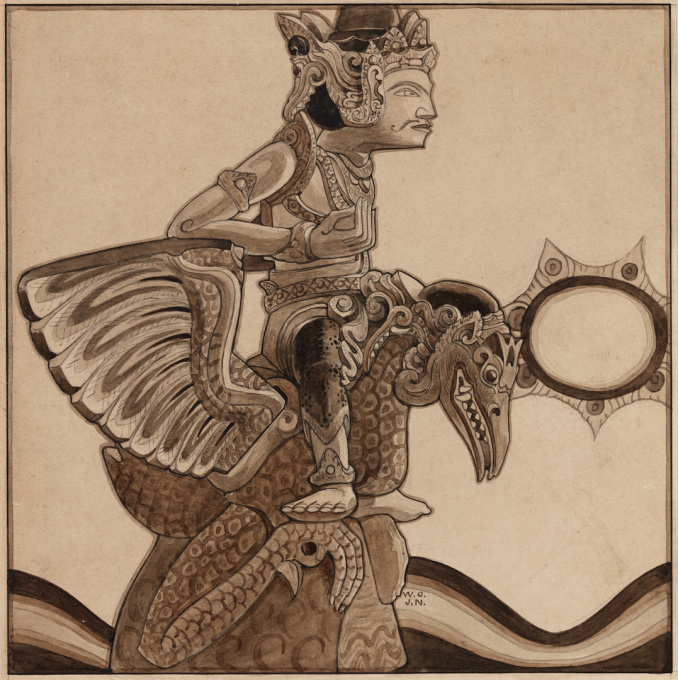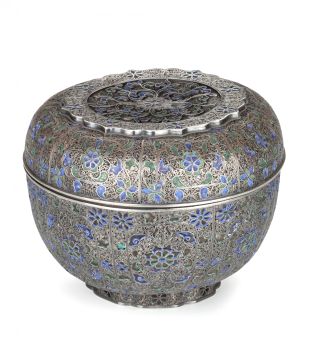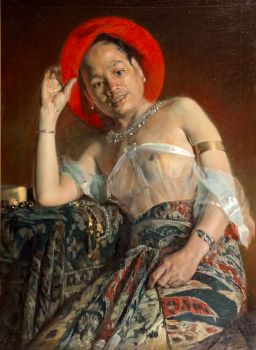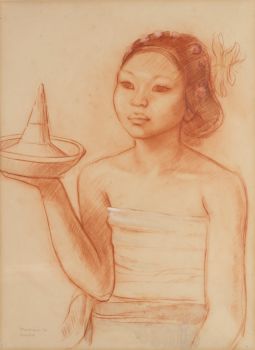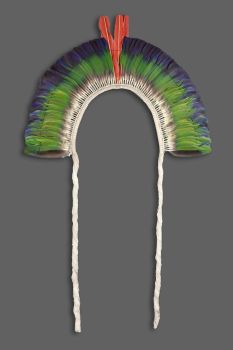Une importante collection de dessins de W.O.J. Nieuwenkamp (1874-1950) 1900
Willem Otto Wijnand Nieuwenkamp
Prix sur demande
Zebregs & Röell - Fine Art - Antiques
- Sur l'oeuvre d'artAn important collection of drawings by W.O.J. Nieuwenkamp (1874-1950)
From the estate of family of the artist
WILLEM OTTO WIJNAND NIEUWENKAMP (1874-1950)
Nieuwenkamp was born on July 27th 1874 in Amsterdam. His father owned sailing ships sailing to Indonesia and hearing the stories of the returning captains evoked in the young Nieuwenkamp an obsession for distant lands and adventure. After a failed attempt by his father to have his son make a career in his business, Nieuwenkamp attended the Academy for Decorative Art in Amsterdam. However, he left within one year to go his own way.
He was an autodidact and a great experimenter with new techniques, particularly in the art of etching. Nieuwenkamp was a very focused man with the discipline of a scientist tempered by the sensitivity of an artist, a lust for adventure, a natural appreciation for ethnic arts and an enormous ambition to tread new paths.
In 1898 he visited Indonesia for the first time and on his second visit in 1903-1904 he went on to Bali and became the first foreign artist to love Bali and the Balinese with a passion. Having secured agreements with several museums in the Netherlands to obtain Balinese art and objects for their collections, Nieuwenkamp immediately started to purchase and order a wide range of ethnographic art and objects from local artists and craftsmen.
Through his drawings and books, he gave an excellent impression of Balinese art and culture at that time. Since 1854 Northern Bali was under Dutch rule but Southern Bali in 1904, when Nieuwenkamp visited it, was still independent. Nieuwenkamp would be one of the last Westerners to experience a glorious medieval society in its final days. During his second visit to Bali in 1906 the Dutch decided to end the independence of South Bali and Nieuwenkamp was invited by the Governor-General van Heutz to accompany the Dutch invasion force. By contemporary European standards, the Balinese were barbarous and primitive, particularly with widows throwing themselves in the flames of the funeral pyre of their deceased husbands. But Nieuwenkamp was a singular man who saw in their society the beauty and soul that had been lost in his own.
On September 20th, 1906, Denpasar, the capital of South Bali fell to the Dutch military forces. Official military briefings praised the victory which was reported with nationalistic pride on the front pages of all Dutch newspapers. As Nieuwenkamp had witnessed, the truth was far from glorious. As if in trance the Balinese, men women and children, dressed in their finest silks and jewellery and armed with ancient bejewelled krises, the Raja himself mounted atop a golden palanquin, rushed forward, the men killing their wives and children and the Dutch machinegun fire doing the rest. The once-powerful and magnificent court of Denpasar was left in ashes and as many as two thousand Balinese dead. The Dutch suffered four deads.
Nieuwenkamp made drawings and saved as many beautiful architectural elements and artefacts from the rubbles as he could, most of it now in the collection of the Ethnological Museum in Leiden. - Sur l'artisteWILLEM OTTO WIJNAND NIEUWENKAMP Nieuwenkamp est né le 27 juillet 1874 à Amsterdam. Son père possédait des voiliers naviguant vers l'Indonésie et entendant les histoires des capitaines de retour évoquait chez le jeune Nieuwenkamp une obsession pour les contrées lointaines et l'aventure. Après une tentative ratée de son père de faire carrière à son fils dans son entreprise, Nieuwenkamp a fréquenté l'Académie des arts décoratifs d'Amsterdam. Cependant, il est parti dans un délai d'un an pour suivre sa propre voie. Il était un autodidacte et un grand expérimentateur des nouvelles techniques, en particulier dans l'art de la gravure. Nieuwenkamp était un homme très concentré avec la discipline d'un scientifique tempéré par la sensibilité d'un artiste, une soif d'aventure, une appréciation naturelle des arts ethniques et une énorme ambition de s'engager sur de nouvelles voies. En 1898, il visita l'Indonésie pour la première fois et lors de sa deuxième visite en 1903-1904, il se rendit à Bali et devint le premier artiste étranger à aimer Bali et les Balinais avec passion. Ayant conclu des accords avec plusieurs musées aux Pays-Bas pour obtenir de l'art et des objets balinais pour leurs collections, Nieuwenkamp a immédiatement commencé à acheter et à commander une large gamme d'art et d'objets ethnographiques auprès d'artistes et artisans locaux. À travers ses dessins et ses livres, il a donné une excellente impression de l'art et de la culture balinaise à cette époque. Depuis 1854, le nord de Bali était sous domination hollandaise, mais le sud de Bali en 1904, lorsque Nieuwenkamp l'a visité, était toujours indépendant. Nieuwenkamp serait l'un des derniers Occidentaux à vivre une glorieuse société médiévale dans ses derniers jours. Lors de sa deuxième visite à Bali en 1906, les Néerlandais ont décidé de mettre fin à l'indépendance du sud de Bali et Nieuwenkamp a été invité par le gouverneur général van Heutz à accompagner la force d'invasion néerlandaise. Selon les normes européennes contemporaines, les Balinais étaient barbares et primitifs, en particulier avec les veuves se jetant dans les flammes du bûcher funéraire de leurs maris décédés. Mais Nieuwenkamp était un homme singulier qui voyait dans leur société la beauté et l'âme qui avaient été perdues dans la sienne. Le 20 septembre 1906, Denpasar, la capitale du sud de Bali, tombe aux mains des forces militaires néerlandaises. Les briefings militaires officiels ont salué la victoire qui a été rapportée avec fierté nationaliste à la une de tous les journaux néerlandais. Comme Nieuwenkamp l'avait vu, la vérité était loin d'être glorieuse. Comme si en transe les Balinais, hommes femmes et enfants, vêtus de leurs plus belles soies et bijoux et armés d'anciens kris ornés de bijoux, le Raja lui-même monté sur un palanquin doré, se précipita, les hommes tuant leurs femmes et leurs enfants et le feu de la mitrailleuse hollandaise. faire le reste. La cour jadis puissante et magnifique de Denpasar a été laissée en cendres et jusqu'à deux mille Balinais sont morts. Les Néerlandais ont subi quatre morts. Nieuwenkamp a fait des dessins et a sauvé autant de beaux éléments architecturaux et artefacts des décombres que possible, la plupart d'entre eux maintenant dans la collection du Musée ethnologique de Leyde.
Êtes-vous intéressé par l'achat de cette oeuvre?
Related artworks
Artiste Inconnu
The bell of the VOC fortress in Jaffna, Sri Lanka1747
Prix sur demandeZebregs & Röell - Fine Art - Antiques
 Sélectionné par
Sélectionné parDanny Bree
Artiste Inconnu
UNE TÊTE DE PLUME TRIBU JURUNA1900 - 1950
Prix sur demandeZebregs & Röell - Fine Art - Antiques
Artiste Inconnu
A large Japanese Imari porcelain 'VOC Groningen' dish1800 - 1925
Prix sur demandeZebregs & Röell - Fine Art - Antiques
1 - 4 / 12

